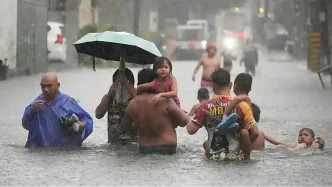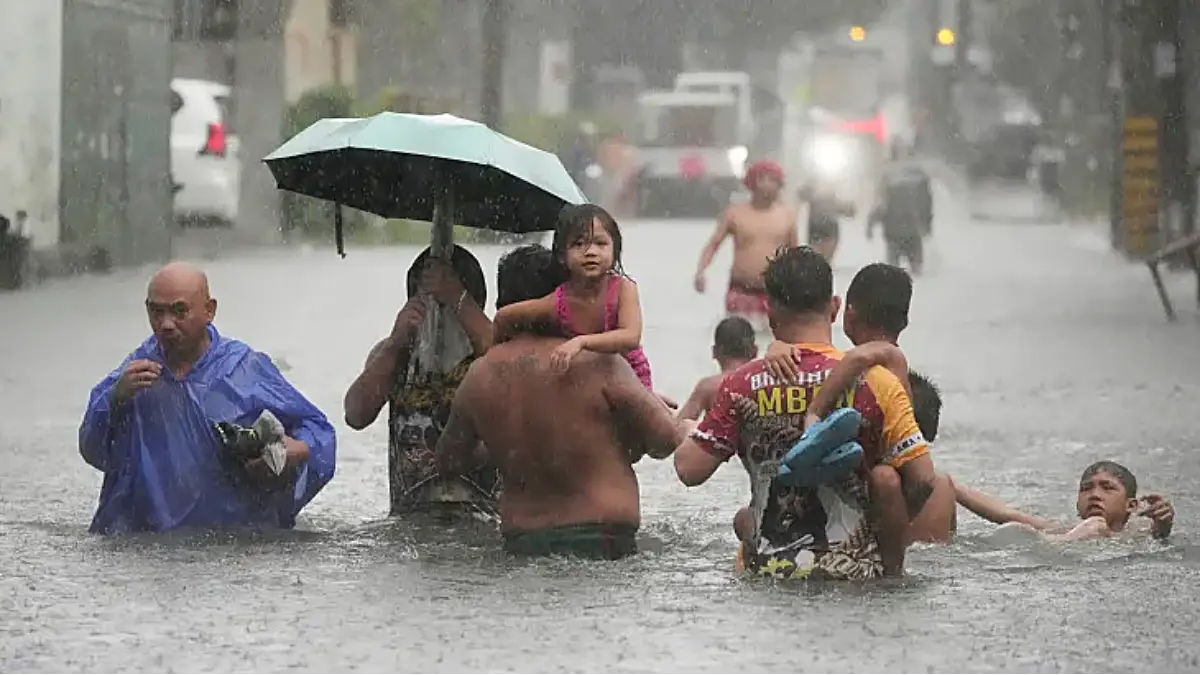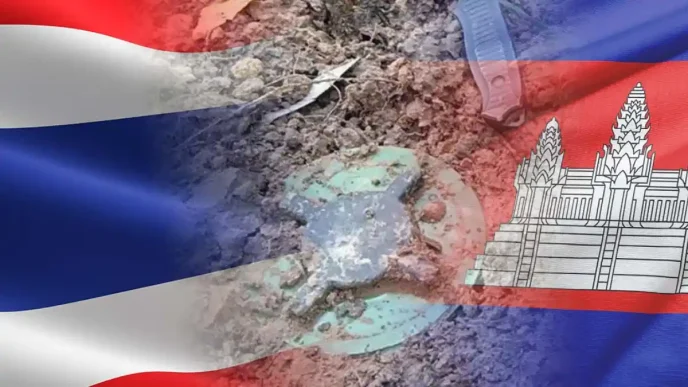As severe tropical storm Wipha barrels toward Vietnam, poised to make landfall today, July 22, 2025, Thailand is already grappling with the destructive effects of a powerful southwest monsoon. Heavy rainfall, strong winds, and towering waves up to 4 meters high are forecast across multiple regions, raising urgent concerns about flash floods, overflows, and dangerous maritime conditions. With communities on high alert, the storm’s impact could stretch from coastal villages to urban centers, testing the resilience of infrastructure and emergency response systems.
Storm Wipha’s Path and Immediate Threats
Severe tropical storm Wipha, currently positioned over the Gulf of Tonkin, is expected to strike upper Vietnam later today. According to forecasts, the storm will bring intense rainfall and high winds to the region, compounding the challenges already faced by neighboring Thailand. The Thai Meteorological Department reports that a strong southwest monsoon, combined with a monsoon trough over upper Myanmar and Laos, is driving extreme weather across the Andaman Sea, the Gulf of Thailand, and much of Thailand’s interior.
In Thailand, the storm’s influence is already evident. The North, Northeast, Central, and Eastern regions are bracing for isolated heavy to very heavy rainfall, with authorities warning of flash floods in low-lying areas and near foothills. Cities and provinces such as Chiang Mai, Udon Thani, Nakhon Sawan, and Prachin Buri are among those listed for severe weather, with rainfall expected to overwhelm drainage systems and disrupt daily life. Residents have been urged to stay vigilant and prepare for sudden flooding, particularly in vulnerable rural communities.
Maritime Warnings and Coastal Risks
The storm is also wreaking havoc on maritime conditions, with waves in the upper Andaman Sea predicted to reach between 2 and 4 meters, and exceeding 3 meters during thundershowers. Similar conditions are forecast for the lower Andaman Sea and the upper Gulf of Thailand, where waves could surpass 3 meters in stormy zones. The Thai Meteorological Department has issued stern advisories for all vessels to exercise extreme caution, recommending that small boats remain ashore until the weather stabilizes.
Coastal areas in southern Thailand, particularly in provinces like Ranong, Phang Nga, Phetchaburi, and Prachuap Khiri Khan, face additional risks from isolated heavy rain and waves up to 4 meters during thundershowers. Fishermen and coastal residents are on edge, as these conditions threaten livelihoods and safety. The potential for storm surges and coastal erosion looms large, especially in areas already battered by seasonal monsoons.
Regional Weather Forecast and Public Response
The 24-hour forecast for Thailand paints a grim picture. In the North, provinces including Mae Hong Son, Chiang Rai, and Phitsanulok are set to experience widespread thundershowers, strong winds, and isolated heavy rain, with temperatures ranging from a low of 22°C to a high of 33°C. The Northeast, covering areas like Loei, Nong Khai, and Chaiyaphum, faces similar conditions, with maximum temperatures not exceeding 32°C. Central Thailand, including Kanchanaburi and Ratchaburi, and the East, such as Chanthaburi and Trat, are also under threat from heavy downpours and gusty winds.
In the South, both the east and west coasts are affected, with Ranong and Phang Nga on the west coast expecting waves up to 4 meters during thundershowers. Even the Bangkok metropolitan area is not spared, with fairly widespread thundershowers and strong winds forecast, and temperatures expected to hover between 25°C and 32°C. Public response has been swift, with local authorities distributing sandbags, reinforcing flood barriers, and issuing evacuation notices in high-risk zones. However, the scale of the impending deluge raises questions about whether these measures will suffice.
Broader Implications for Thailand and Vietnam
Beyond the immediate dangers, the arrival of storm Wipha underscores the broader challenges of climate resilience in Southeast Asia. Thailand, still recovering from past flooding disasters, faces recurring threats to agriculture, infrastructure, and urban centers during monsoon seasons. Rice fields in the Northeast and Central regions, critical to the nation’s economy, are at risk of inundation, potentially driving up food prices and straining rural livelihoods. Meanwhile, Vietnam’s coastal provinces, often in the direct path of tropical storms, must contend with the dual threat of flooding and typhoon damage, which could displace thousands and disrupt key industries like fisheries and tourism.
Environmental experts have long warned that climate change is intensifying the frequency and severity of such storms in the region. Rising sea temperatures in the Gulf of Thailand and the South China Sea fuel stronger tropical systems, while deforestation and urbanization exacerbate flooding risks by reducing natural drainage. For now, though, the focus remains on immediate survival—ensuring that communities have the resources and warnings needed to weather the storm.
A Region on Edge
As storm Wipha bears down on Vietnam and continues to batter Thailand, the coming days will test the preparedness of both nations. While meteorological agencies provide critical updates, the human toll of such events often unfolds in the aftermath—homes lost, roads washed out, and lives disrupted. For coastal fishermen, farmers in flood-prone valleys, and urban dwellers alike, the storm is a stark reminder of nature’s power and the urgent need for robust disaster response systems.
With heavy rain and high waves set to persist, the question remains: will the region emerge unscathed, or will Wipha leave a lasting mark on already vulnerable communities? Only time will tell, as authorities and residents alike brace for the storm’s full impact.
















